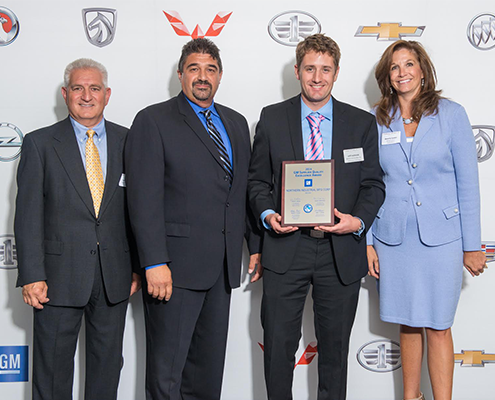An Introduction to Safety in Manufacturing
Safety in manufacturing encompasses a broad spectrum of practices, regulations, and precautions designed to protect workers and facilities from injuries, accidents, and other potentially harmful incidents. It’s a critical aspect that can’t be overlooked in the quest for productivity and efficiency. This includes everything from proper personal protective equipment (PPE) to robust machinery safety protocols.
The manufacturing industry, by its nature, presents a range of risks and hazards. These include but are not limited to the operation of heavy machinery, exposure to hazardous substances, and potential for injuries from repetitive motions. Therefore, an effective safety program is essential to mitigate these risks and ensure the well-being of employees.
The components that manufacturers produce also play a significant role in overall safety. Every component, including seemingly minor ones like shims and thrust washers, are integral to maintaining the safe operation of the machinery they are part of. This brings us to the specific focus of this comprehensive guide – understanding the production of shims and thrust washers and their role in safety.
The Importance of Safety in Manufacturing
Safety in manufacturing is not just a moral obligation; it also makes good business sense. A safe work environment reduces the likelihood of work-related injuries and illnesses, which can lead to increased productivity, reduced insurance premiums, and improved employee morale.
Moreover, ensuring safety in manufacturing is a legal requirement in many jurisdictions. Regulatory bodies, such as the Occupational Safety and Health Administration (OSHA) in the U.S., set and enforce specific safety standards that manufacturers must comply with. Failure to meet these standards can result in hefty fines and penalties.
In the context of components like shims and thrust washers, their quality and reliability are crucial to the safe operation of machinery. If these components fail or are not produced to the correct specifications, it can lead to equipment malfunction. This can jeopardize the safety of operators and other workers, potentially leading to severe accidents and injuries.
Understanding Shim and Thrust Washer Production
Shims and thrust washers play a pivotal role in various industrial applications. Shims are thin pieces of material used to fill small gaps or spaces between objects, ensuring a precise fit. On the other hand, thrust washers are a type of bearing that controls and limits the movement of machine parts.
The production of shims and thrust washers requires precision and attention to detail. They must be manufactured to exact specifications to function correctly. Any deviation can lead to component failure, resulting in equipment malfunction and potential safety hazards.
The process typically involves cutting or punching the required shapes from sheets of metal or plastic. The pieces are then finished to the desired thickness using grinding or lapping machines. Throughout the process, strict quality control measures must be in place to ensure the finished components meet the required specifications.
Role of Shim and Thrust Washers in Manufacturing Safety
Shims and thrust washers may seem insignificant, but their role in manufacturing safety is vital. They ensure the correct alignment and operation of machinery parts, reducing the risk of premature wear or failure. When these components are of high quality and correctly installed, they contribute to the overall safety and longevity of the machinery.
In a broader safety context, the correct use of shims and thrust washers helps prevent machinery from vibrating excessively or moving out of alignment. Both scenarios could lead to catastrophic failures, endangering the safety of operators and other workers in the vicinity.
Moreover, the regular inspection and replacement of worn shims and thrust washers is a fundamental aspect of machinery maintenance. This proactive approach helps identify potential issues before they escalate, further enhancing safety in the manufacturing environment.
Comprehensive Safety Tips for Manufacturing
Manufacturing safety goes beyond the correct use and maintenance of machinery components. It requires a holistic approach that involves every aspect of the production process. Here are some comprehensive safety tips for manufacturing:
- Regular employee training: This should cover not only the safe operation of machinery but also emergency procedures, use of PPE, and hazard recognition.
- Clear communication: Information about potential hazards, safety procedures, and changes in operations should be readily available and communicated effectively.
- Regular inspections: Regular safety inspections can help identify potential risks before they become serious issues. This includes inspecting machinery components like shims and thrust washers.
- Encourage a safety culture: Safety should be a shared responsibility. Encourage employees to take an active role in safety and to report potential issues or unsafe practices.
Implementing Safety Measures in Shim and Thrust Washer Production
In the specific context of shim and thrust washer production, implementing safety measures involves several steps. This starts with the design phase, where safety considerations should be a key driver in defining specifications and materials.
During the production phase, machinery safety is paramount. This includes regular maintenance and inspection of the machines used, as well as the safe handling and disposal of any waste materials generated during the production process.
Quality control is another crucial aspect. This involves rigorous testing of the finished shims and thrust washers to ensure they meet the required specifications. Any components that fail to meet these standards should be rejected, as they could potentially compromise the safety of the machinery they are installed in.
Case Studies: Manufacturers Prioritizing Safety
Several manufacturers are leading the way in prioritizing safety in their operations. For instance, Alcoa, a global leader in aluminum production, has developed a safety-first culture that has seen them achieve one of the industry’s lowest injury rates.
Similarly, Dow Chemical Company has implemented a comprehensive safety program that includes regular training, rigorous inspections, and stringent quality control measures. This has resulted in a significant reduction in work-related injuries and illnesses.
These case studies highlight the benefits of prioritizing safety in manufacturing – not just in terms of worker health and well-being, but also in productivity and profitability.
Manufacturing Safety: Best Practices and Resources
There are many resources available to help manufacturers implement best practices in factory safety. These include guidelines and standards from regulatory bodies like OSHA, as well as industry-specific resources.
For instance, the National Safety Council offers a range of resources on topics like machinery safety, hazard communication, and emergency preparedness. Similarly, the American Society of Safety Professionals provides industry-specific safety standards, training resources, and certification programs.
The Future of Safety in Manufacturing
Looking ahead, safety in manufacturing will continue to evolve in response to new technologies, regulatory changes, and changing workforce demographics. For instance, the rise of automation and robotics presents both new opportunities and challenges for safety.
On the one hand, automation can reduce the risk of injuries by taking over dangerous tasks. On the other hand, it also introduces new safety considerations, such as ensuring machinery is properly maintained and that workers are adequately trained to interact with automated systems.
In the context of shim and thrust washer production, advancements in manufacturing technologies could lead to even greater precision and reliability. This could further enhance the safety and longevity of the machinery these components are used in.
Northern Industrial: Prioritizing Safety in Every Aspect of Manufacturing
Prioritizing safety in manufacturing is a multifaceted task that requires a holistic approach. From the production of components like shims and thrust washers to the implementation of comprehensive safety programs, every aspect contributes to a safer and more productive manufacturing environment.
Manufacturers must remain proactive in their approach to safety, continually seeking ways to improve and adapt to changing circumstances. By doing so, they can protect their most valuable asset – their employees – while also improving productivity and profitability.
Northern Industrial Manufacturing is your turnkey partner for even the most challenging projects. Our experts understand which options work best for your specific material and surface finish requirements, and offer the most advanced technologies to meet the needs of your unique project.
We will bring your parts to market on time – with assistance from prototype to volume production – SAFELY, quickly, affordably and efficiently as possible.
Thank you for visiting our blog where we keep customers updated and informed on the latest processes in automotive parts manufacturing!
Please check back often if you would like to learn more about the world of precision thrust washers, selective shims, spacers, and other automotive parts.




